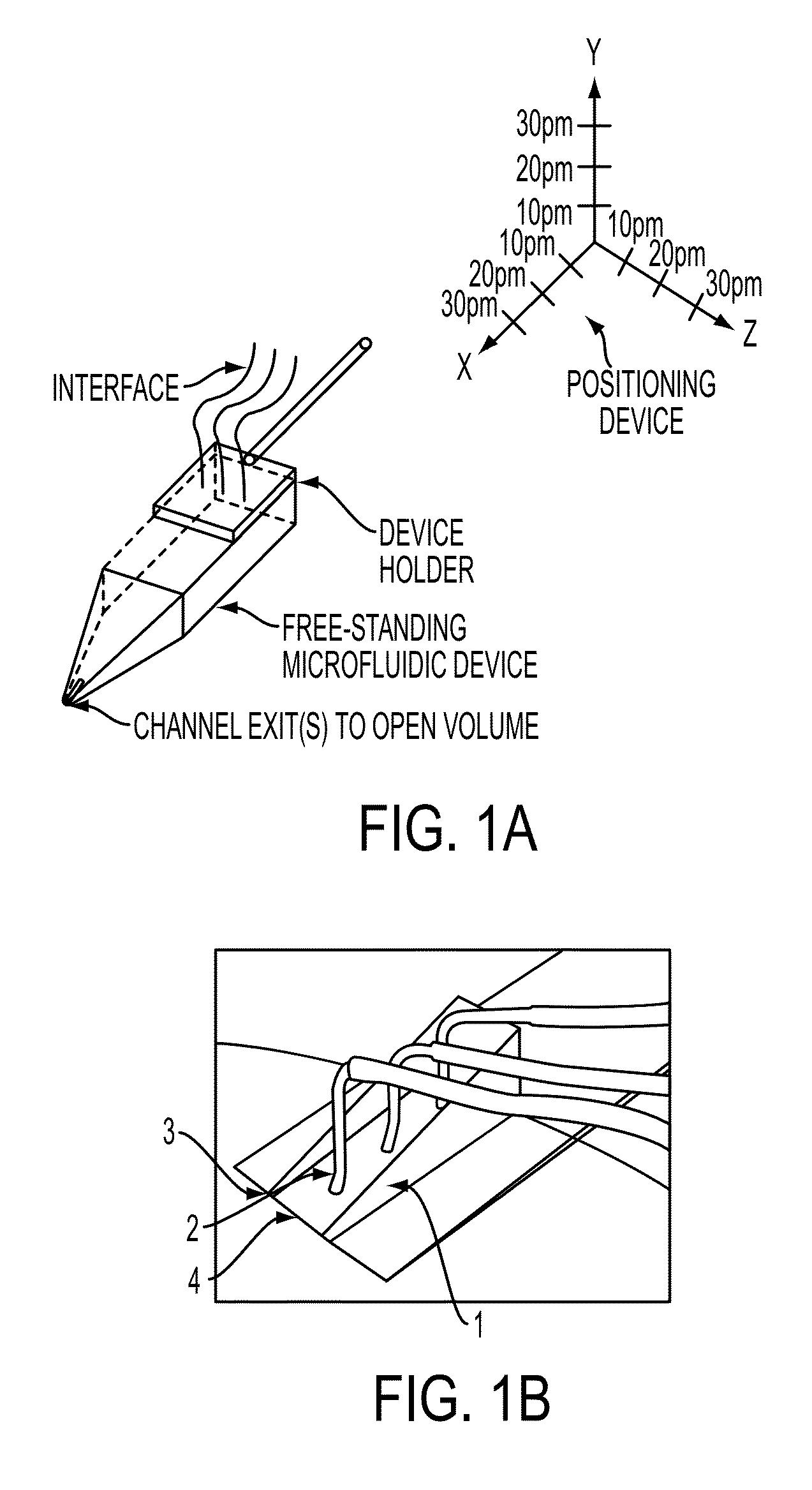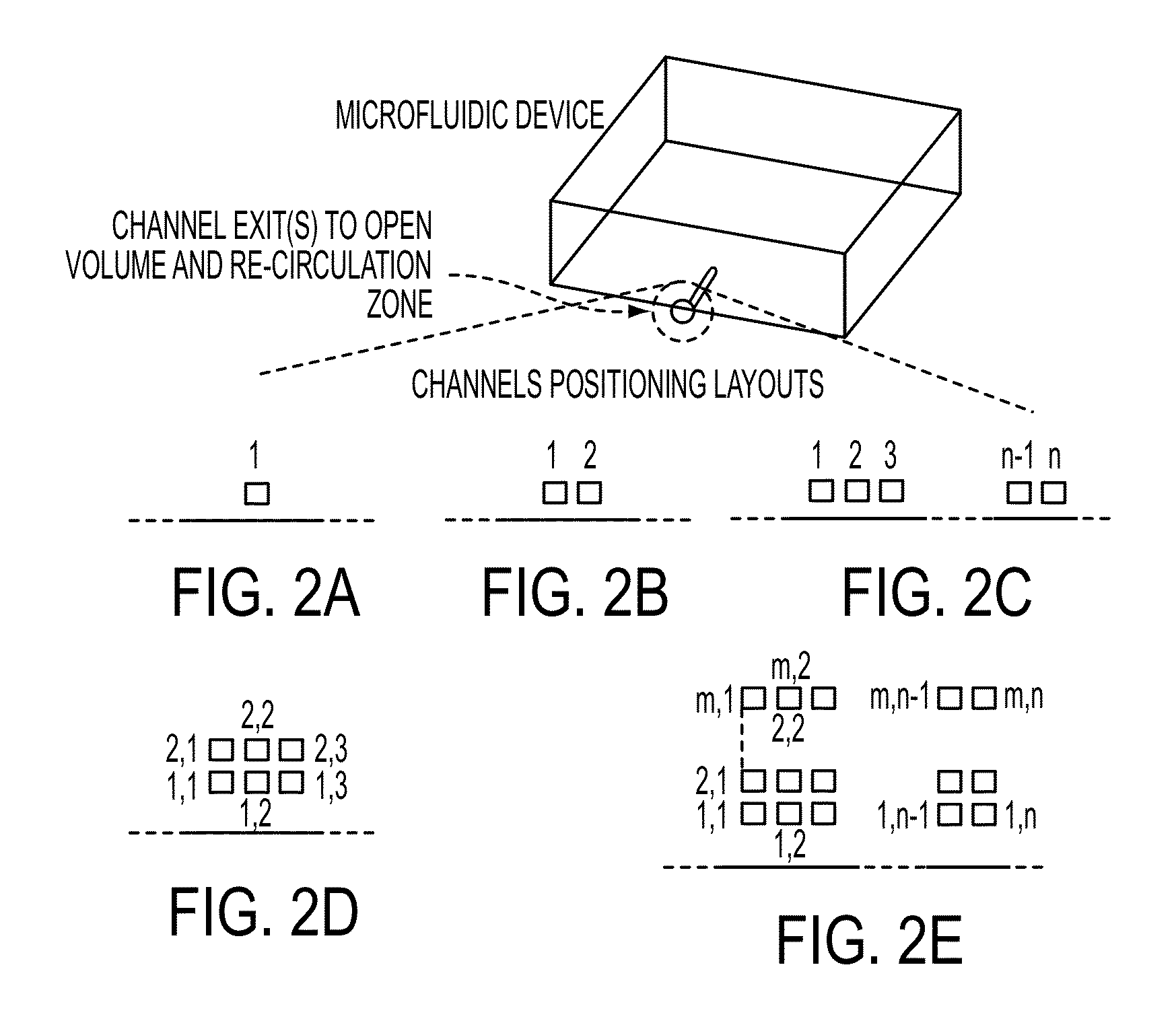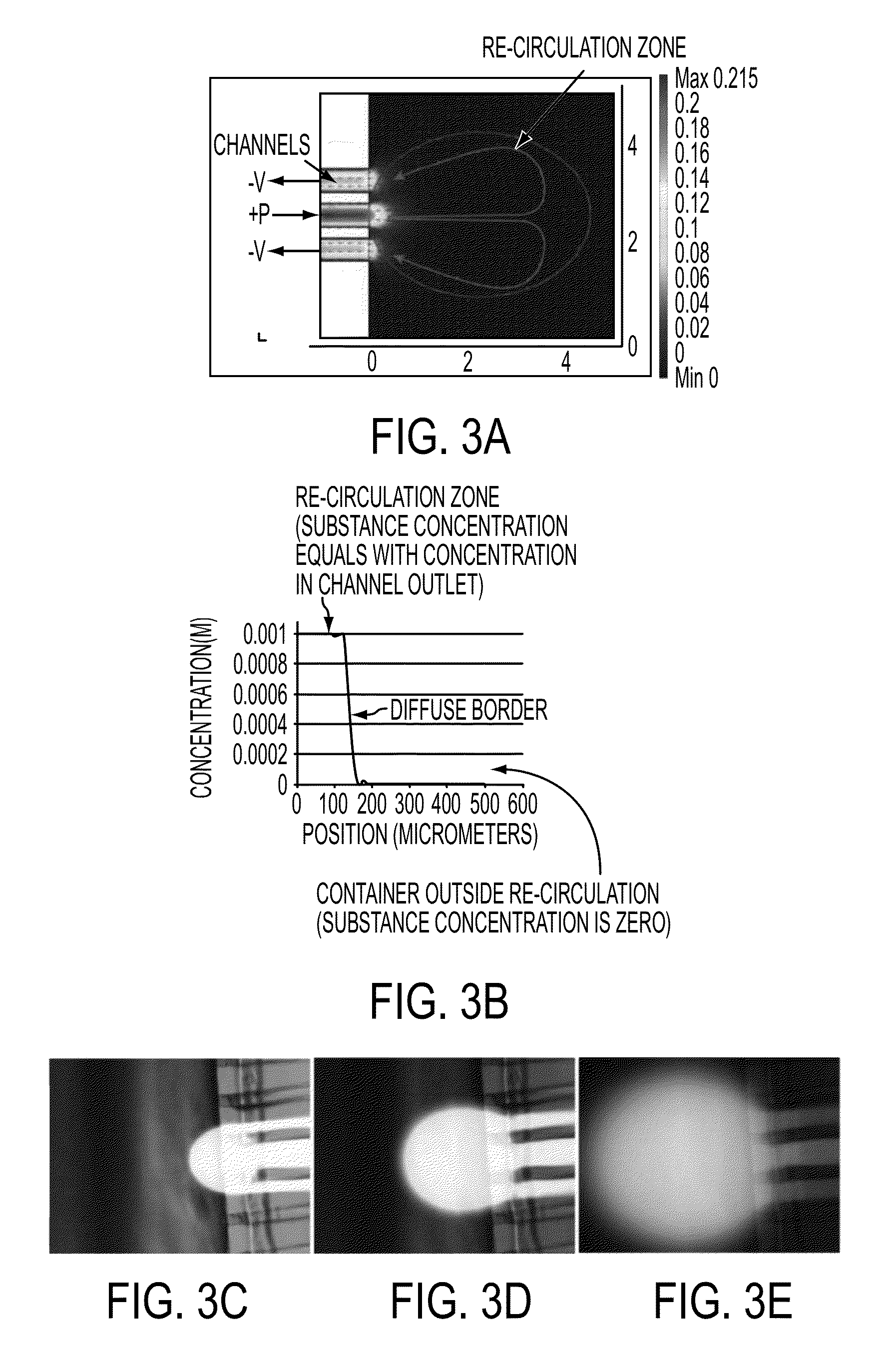Pipettes, methods of use, and methods of stimulating an object of interest
a technology of pipettes and objects, applied in the direction of burettes/pipettes, isotope separation, electrolysis, etc., can solve the problems of contaminating other cells or surfaces, difficult to use conventional glass pipettes in order, and unfavorable penetration, etc., to achieve the effect of enhancing vibration stability
- Summary
- Abstract
- Description
- Claims
- Application Information
AI Technical Summary
Benefits of technology
Problems solved by technology
Method used
Image
Examples
example device
[0221]An example of a device capable of changing the composition of the re-circulation zone over time by multiplexing between several liquid inputs is shown in FIG. 22A. Channel exits are located at the tapered tip of the microfluidic device to facilitate applicability. The device interface contains three solution inputs (marked as solution 1, 2 and 3), two switching controls (marked as switch 1 and 2) two waste outputs (marked as waste 1 and 2) and one re-circulation output. (FIG. 22A) The flow is pressure driven. All solution inputs are pressured at pressure +P, while switching controls can be pressurized to the same pressure (+P) or to the atmospheric pressure (0).
[0222]Pressure +P can, in some embodiments, range from about 2 kPa to about 100 kPa. For example, pressure +P can be selected from the group consisting of: between about 2 kPa and about 10 kPa, between about 10 kPa and about 20 kPa, between about 20 kPa and about 30 kPa, between about 30 kPa and about 40 kPa, between ab...
PUM
| Property | Measurement | Unit |
|---|---|---|
| angle | aaaaa | aaaaa |
| angle | aaaaa | aaaaa |
| angle | aaaaa | aaaaa |
Abstract
Description
Claims
Application Information
 Login to View More
Login to View More - R&D
- Intellectual Property
- Life Sciences
- Materials
- Tech Scout
- Unparalleled Data Quality
- Higher Quality Content
- 60% Fewer Hallucinations
Browse by: Latest US Patents, China's latest patents, Technical Efficacy Thesaurus, Application Domain, Technology Topic, Popular Technical Reports.
© 2025 PatSnap. All rights reserved.Legal|Privacy policy|Modern Slavery Act Transparency Statement|Sitemap|About US| Contact US: help@patsnap.com



